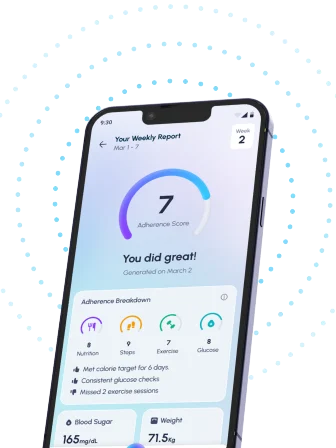Table of Contents
- Delicious Whole-Grain Banana Bread Recipe for Diabetics
- Healthy Banana Bread: A Diabetes-Friendly Whole-Grain Delight
- Is Whole-Grain Banana Bread Good for Diabetes? A Recipe Guide
- Making the Best Diabetic-Friendly Banana Bread: Tips & Tricks
- Whole Grain Banana Bread Recipe: Simple & Diabetes-Conscious
- Frequently Asked Questions
- References
Craving a moist, delicious banana bread but worried about your blood sugar levels? You’re in the right place! This blog post shares a fantastic recipe for Delicious Whole-Grain Banana Bread: A Diabetes-Friendly Recipe, proving that healthy baking doesn’t mean sacrificing flavor. We’ll show you how to make a loaf packed with wholesome ingredients, naturally sweet and satisfying, without the blood sugar spikes. Get ready to enjoy a guilt-free treat that’s both incredibly tasty and good for you!
Delicious Whole-Grain Banana Bread Recipe for Diabetics
Enjoying delicious baked goods doesn’t have to be off-limits if you have diabetes. This recipe for whole-grain banana bread offers a satisfying treat while being mindful of carbohydrate intake. Managing blood sugar levels effectively often involves careful portion control, and understanding your carbohydrate needs is key. For most people with diabetes, a meal typically contains around 45–60 grams of carbohydrates, though this varies depending on individual needs and medical advice. This recipe helps you incorporate a sweet treat into your diet while staying within a reasonable carb range per serving. Before we begin, you might find it helpful to read our article on Is Banana Good For Diabetes? Let’s Find Out! to better understand the role of bananas in a diabetic diet.
Ingredients for Diabetes-Friendly Banana Bread
This recipe prioritizes whole grains for their fiber content, which aids in blood sugar regulation. Use ripe bananas for natural sweetness, reducing the need for added sugar. Remember to always check your nutritional information for accurate carbohydrate counts per serving. Adapt the recipe to your specific dietary needs and consult with your doctor or dietitian for personalized advice. Consider using whole wheat flour, oats, or a blend for added fiber.
Baking Instructions & Serving Suggestions
The baking process is similar to traditional banana bread, with the key difference being the use of whole-grain flour. This enhances the nutritional value and provides a denser, more satisfying texture. Cut the bread into smaller slices to control portion size and carbohydrate intake per serving. Serve a small slice alongside your meal, ensuring it fits within your daily carbohydrate allowance. This recipe is perfect for individuals in Indian and tropical countries where bananas and whole grains are readily available. Enjoy this healthy and delicious treat as part of a balanced diet!
Adapting the Recipe for Regional Preferences
In many Indian and tropical regions, spices like cardamom or cinnamon are commonly used in baking. Feel free to experiment by adding a pinch of these spices to enhance the flavor profile of your banana bread. You can also incorporate locally available nuts or seeds for added texture and nutrients. Remember to adjust the overall carbohydrate count accordingly when making substitutions. For more guidance on managing carbohydrate intake, you might want to check out our guide on Can Diabetics Eat Garlic Bread? which offers insights into making informed food choices. Enjoy baking and savor this delicious, diabetes-friendly treat!
Healthy Banana Bread: A Diabetes-Friendly Whole-Grain Delight
The global economic burden of diabetes is staggering, reaching $760 billion annually. Managing this condition often involves careful dietary choices. This delicious whole-grain banana bread recipe offers a healthy and satisfying alternative to traditional, sugary baked goods, perfect for individuals in India and other tropical countries where bananas are readily available. It’s a guilt-free treat that won’t spike your blood sugar.
Key Ingredients & Substitutions
This recipe prioritizes whole grains for sustained energy release and fiber, crucial for blood sugar control. We use whole wheat flour instead of refined flour, and you can easily substitute other whole grains like oats or ragi flour common in Indian cuisine for a unique flavor profile. Ripe, overripe bananas are key – they provide natural sweetness, reducing the need for added sugar. Consider using jaggery or coconut sugar as healthier alternatives to white sugar if needed. Spices like cardamom or cinnamon, widely used in Indian baking, add delicious aromatic depth and potential health benefits.
Making it Diabetes-Friendly
Portion control is vital. Enjoy a small slice as part of a balanced meal. This recipe emphasizes natural sweetness from bananas, but if you do add sweeteners, use them sparingly. Including nuts like almonds or walnuts provides healthy fats and fiber. Remember to check your blood sugar levels after consuming this treat to monitor its impact on your individual metabolism. For more ideas on diabetes-friendly foods, check out 20 Best Foods for People with Diabetes – Tap Health.
Enjoy Your Healthy Treat!
This recipe empowers you to enjoy a beloved treat without compromising your health. Share this recipe with your family and friends, especially those living with diabetes in India and across tropical regions where fresh, affordable bananas are easily accessible. Let’s make healthy eating delicious and accessible to all! For more inspiration on creating delicious and healthy meals for people with diabetes, especially during the holidays, see Creating Diabetes-Friendly Dishes for the Holidays.
Is Whole-Grain Banana Bread Good for Diabetes? A Recipe Guide
Managing blood sugar levels is crucial, especially in regions like India and other tropical countries where dietary habits can significantly impact diabetes risk. Understanding your blood glucose levels is key; below 5.7% is considered normal, 5.7%–6.4% indicates prediabetes, and 6.5% or higher suggests diabetes. This means careful food choices are essential. Can whole-grain banana bread fit into a diabetes-friendly diet? The answer is a qualified yes.
The Benefits of Whole Grains and Bananas
Whole-grain flour, unlike refined flour, offers fiber, which helps regulate blood sugar spikes. Bananas, while containing natural sugars, also provide potassium and other essential nutrients. The key is moderation and portion control. A recipe using whole-wheat flour and a reduced amount of added sugar can create a healthier, more balanced treat. This is especially important in tropical climates where access to fresh produce is often readily available, allowing for a more balanced diet.
Creating a Diabetes-Friendly Recipe
Choosing a recipe that prioritizes whole grains and minimizes added sugar is paramount. Look for recipes that use ingredients like oats, nuts, or seeds alongside the whole wheat flour to further enhance the nutritional value and fiber content. Remember, even with a diabetes-friendly recipe, portion control is key. Enjoy a small slice as part of a balanced meal, rather than consuming large quantities. For more information on other diabetes-friendly ingredients, you might find our article on Is Baking Soda Good for Diabetics? Benefits, Risks, and Insights helpful.
A Delicious and Healthy Treat
Making informed choices about what we eat is essential to maintaining healthy blood sugar levels. This delicious whole-grain banana bread recipe offers a satisfying treat without compromising your health goals. In India and other tropical countries, incorporating readily available local ingredients into your diabetes-friendly recipes can ensure both deliciousness and nutritional benefit. Explore recipes that incorporate local spices and fruits to create unique and satisfying options. Considering other vegetables, you might also want to check out our article on Are Green Beans Good for Diabetes?
Making the Best Diabetic-Friendly Banana Bread: Tips & Tricks
Baking delicious and healthy banana bread can be challenging, especially when managing diabetes. Over 30% of diabetes patients report HbA1c levels above 9%, highlighting the need for careful dietary choices. This recipe focuses on creating a satisfying treat that fits within a diabetes-friendly meal plan, particularly relevant for individuals in India and tropical countries where bananas are readily available.
Choosing the Right Ingredients
Whole grains are key! Opt for whole wheat flour or oat flour instead of refined white flour to significantly improve the bread’s nutritional profile and manage blood sugar levels more effectively. Using ripe but not overly mushy bananas ensures sweetness without excessive sugar. Consider adding ingredients like chia seeds or flaxseeds for added fiber and nutrients, beneficial for overall health and diabetes management. Spices like cinnamon can also help regulate blood sugar. Thinking about other ingredients? You might find our guide on Is Butter Bad for Diabetics? A Comprehensive Guide helpful.
Baking Techniques for Success
Using a smaller loaf pan can result in a denser, moister banana bread, which is preferred for better glycemic control. Don’t overbake! Overbaked bread will be dry and less satisfying. Check for doneness with a toothpick – it should come out with just a few moist crumbs attached. Let the bread cool completely before slicing to allow it to set properly. Remember, portion control is crucial, even with healthy recipes.
Adapting for Regional Preferences
In India and other tropical regions, you can easily incorporate locally sourced ingredients. Try adding cardamom or other aromatic spices commonly used in Indian baking. You can also experiment with different types of bananas readily available in your area for unique flavor profiles. Remember to always check nutritional labels and adjust ingredient quantities based on your individual dietary needs and blood sugar levels. Consult with your doctor or a registered dietitian for personalized advice on managing your diabetes through diet. For more information on bread choices, check out our article on Is Sourdough Bread Safe for Diabetics?.
Whole Grain Banana Bread Recipe: Simple & Diabetes-Conscious
Diabetes affects a significant portion of the global population, with over 75% of those living with the condition residing in low- and middle-income countries, as highlighted by the International Diabetes Federation. This underscores the importance of accessible and healthy recipes, particularly in regions like India and other tropical countries where readily available ingredients are key. This simple, whole-grain banana bread recipe is designed to be both delicious and diabetes-friendly.
Ingredients for a Healthier Treat
This recipe focuses on utilizing whole-wheat flour for added fiber, which aids in blood sugar regulation. We’ll also emphasize ripe bananas for natural sweetness, reducing the need for excessive added sugar. Consider using easily sourced ingredients common across Indian and tropical regions such as coconut oil or ghee instead of butter. Remember to adjust sweetness to your individual needs and preferences. For more information on healthy dietary choices for managing diabetes, you might find our article on Is Chana Dal Good for Diabetes? Benefits & Recipes helpful.
Preparation: A Step-by-Step Guide
Start by mashing ripe bananas. Combine this with whole wheat flour, baking powder, cinnamon, and a pinch of salt. Slowly add your chosen oil (coconut, ghee, or another suitable option) and a touch of sweetener like jaggery or honey (use sparingly). Mix until just combined. Pour the batter into a greased loaf pan and bake at 350°F (175°C) until a toothpick inserted into the center comes out clean. Let it cool completely before slicing and enjoying.
Tips for Success
Use ripe bananas: The riper the bananas, the sweeter they are, reducing your need for added sugar. Choose whole wheat flour: This provides essential fiber, promoting better blood sugar control. Experiment with spices: Cardamom, nutmeg, or ginger can add a delightful twist.
Enjoy Responsibly
This recipe offers a delicious and healthier alternative to traditional banana bread, making it a suitable option for individuals managing diabetes in India and other tropical countries. Remember to always consult with your healthcare provider or a registered dietitian for personalized dietary advice. Enjoy this wholesome treat as part of a balanced diet and active lifestyle! If you’re looking to incorporate this recipe into a broader weight management plan, check out our guide on How to Lose Weight with Diabetes Diet Plan.
Frequently Asked Questions on Delicious Whole-Grain Banana Bread
Q1. What makes this banana bread recipe diabetes-friendly?
This recipe uses whole wheat flour for added fiber, ripe bananas for natural sweetness (reducing added sugar), and emphasizes portion control to help manage blood sugar levels.
Q2. What are the key ingredients and are there any substitutions?
The recipe uses whole wheat flour, ripe bananas, and spices like cardamom and cinnamon. Substitutions like coconut oil or jaggery are suggested, using ingredients readily available in Indian and tropical regions.
Q3. How does portion control help in managing blood sugar?
Eating smaller slices of banana bread as part of a balanced meal helps prevent spikes in blood sugar levels. The recipe emphasizes mindful portioning.
Q4. Is it essential to consult a healthcare professional before using this recipe?
Yes, it’s crucial to consult your doctor or a registered dietitian for personalized dietary advice tailored to your specific needs and blood glucose levels. This recipe is a suggestion and may not be suitable for everyone.
Q5. What are the main benefits of this recipe compared to regular banana bread?
This recipe offers a delicious and healthy treat that incorporates fiber, natural sweetness, and portion control, aligning with diabetes management strategies while still being tasty.
References
- A Practical Guide to Integrated Type 2 Diabetes Care: https://www.hse.ie/eng/services/list/2/primarycare/east-coast-diabetes-service/management-of-type-2-diabetes/diabetes-and-pregnancy/icgp-guide-to-integrated-type-2.pdf
- What is Diabetes: https://www.medschool.lsuhsc.edu/genetics/docs/DIABETES.pdf




